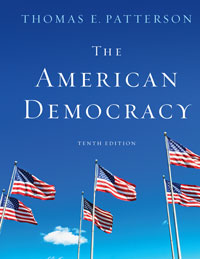 
The American Democracy, 10th Edition (Patterson)Chapter 14:
The Federal Judicial System: Applying the LawChapter Overview
The author discusses the federal judiciary and the work of its judges and justices in this chapter. The role and composition of the American judicial system is described, particularly that of the Supreme Court. The politics of federal court appointments is highlighted as well. The author also focuses on judicial policymaking and describes how legal and political factors come together to influence the decisions made by the justices. In addition, the controversy concerning the proper role of the judiciary in American politics is examined. The main points of the chapter are as follows:
- The federal judiciary includes the Supreme Court of the United States, which functions mainly as an appellate court; courts of appeals, which hear appeals; and the district courts, which hold trials. Each state has a court system of its own, which for the most part is independent of supervision by the federal courts.
- Judicial decisions are constrained by applicable constitutional law, statutory and administrative law, and precedent. Nevertheless, political factors have a major influence on judicial appointments and decisions; judges are political officials as well as legal ones.
- The judiciary has become an increasingly powerful policymaking body in recent decades, raising the question of the judiciary’s proper role in a democracy. The philosophies of judicial restraint and judicial activism provide different answers to this question.
 |  |
|

















